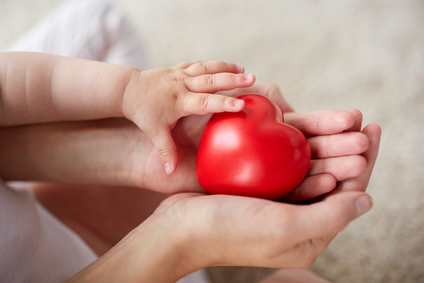Your attachment style can say a lot about your relationships. Maybe you feel confident in most aspects of your life, yet struggle to feel assured in your relationships. Your attachment style can impact how you behave and what you need in a relationship for it to be successful. Understanding your attachment style can help you figure out your strengths and weaknesses around relating so you can feel more secure in your relationships.
Attachment
Attachment refers to the way you relate to people and form bonds. John Bowlby suggests, in attachment theory, that the way a child attaches to their caregiver influences the way they form other social relationships. The four attachment styles are anxious-preoccupied, dismissive-avoidant, fearful-avoidant, and secure. Your attachment style determines how you go about getting your relational needs met. Although your attachment style begins to develop in infancy, it can change due to experiences and interactions with others. For example, if you had an abusive parent, and developed a fearful-avoidant attachment style, but your subsequent relationships were with those that had a secure attachment style, you could have a secure attachment to your spouse. Knowing your attachment style enables you to share this with others so your attachment needs can be addressed. No matter what your attachment style is, when your attachment needs are met you experience happier and healthier relationships.
Anxious-Preoccupied
If you have an anxious-preoccupied attachment style, you might be a highly sensitive person. You are probably very alert to small relationship shifts and find it easy to tune into other’s expressions and moods. Although you are very perceptive, you might have a tendency to catastrophize and imagine the worst. Like, if your partner doesn’t respond immediately to your text, you might assume they are mad at you and they want to end the relationship, instead of just assuming they are busy. When this insecurity sets in, you need a lot of reassurance from your partner to believe that everything is okay. If you receive this reassurance, everything calms down and you relax. If you don’t receive this reassurance, you may resort to manipulative behaviors that could end up destroying your relationship.
The anxious-preoccupied attachment style can develop when your primary caregiver is inconsistent in their availability and ability to respond to your needs. You might become anxious and worried and develop a deep fear of abandonment. This can cause clingy behavior in your adult relationships as you look to your partner to alleviate your self-doubt. Having a negative self-view while having a positive view of others, especially parents and partners, is quite common. Expressing anger can be difficult and suppressed anger might lead to an outburst followed by begging for forgiveness. It is difficult to trust others and there is quite often a strong fear of abandonment.
Dismissive-Avoidant
Someone with a dismissive-avoidant attachment style has a deep fear of rejection. To manage this fear, you might avoid intimate relationships by keeping your partner at a distance or leaving a relationship when it becomes too emotionally charged. A high level of independence is what you desire in your relationships. You might keep yourself busy with work, or hobbies that enable you to nurture your independence. Conflict and troubling emotional situations are hard for you to deal with and you might avoid them by distancing yourself from the relationship. It could be very difficult for you to feel emotionally close to anyone. You might believe you don’t need relationships and you could have a difficult time showing your emotions. This fear of emotional closeness can leave you feeling lonely and isolated.
Those with a dismissive-avoidant attachment style often experienced their caregiver as unavailable. You saw your caregiver as being unresponsive to your needs, or emotionally unavailable. This lead to a belief that you can only rely on yourself, not others. You may feel that if you were to open up to others emotionally, they would reject you. Independence was most likely highly valued in your childhood, while emotional displays were not tolerated. Although it may seem that you have an inflated sense of self, this defense mechanism often hides your deep fears and vulnerability. You might think of your childhood as happy, although it is often difficult to recall any memories related to your parents.
Fearful-Avoidant
If you have a fearful-avoidant attachment style, you probably have difficulty with both intimacy and distance. You could be deeply afraid of abandonment and equally scared of emotional closeness. This can result in a push-pull dynamic in your relationships. You could cling to your partner when you feel they are too distant, and push them away when you believe they are getting too close. Your relationships go through many ups and downs and seem to be quite dramatic. It could be very challenging for you to rely on others as you believe that they will let you down.
If you have a fearful-avoidant attachment style, you may have experienced abuse or neglect from your caregiver. This abusive pattern can sometimes continue in your adult relationships where you might take on a passive role. The fearful-avoidant attachment style can increase your risk for anxiety and depression. You may have viewed your caregiver as being anxious or scary. It is difficult to trust others as you have a negative view of both yourself and others. Although you fear getting close to others and believe they will reject you, there is a reliance on others to maintain a positive self-view.
Secure
When you have a secure attachment style, you tend to have a good view of love and intimacy. There is a belief that you are worthy of love and you expect others to be able to meet your needs. You are able to be vulnerable with your partner and can respond to their needs by offering comfort and support. It is easier to set healthy boundaries in your relationships which helps you get your needs met and enables you to effectively respond to the needs of your partner. Your relationships tend to be growth oriented and low in drama. You turn to your partner in times of distress and are able to be there for others when they need you.
With a secure attachment style, you felt that your caregivers responded to your needs appropriately. This helped you develop trust in others and their ability to meet your needs. You saw your caregiver as someone you could depend on and you expect this in your adult relationships as well. A positive view of self and others is experienced and you expect your relationships to be secure. You place a high value on both dependence and independence in your close relationships. It is easier to trust others and to expect the best from your relationships.
If you notice that you do not have a secure attachment style, it doesn’t mean that your relationships are doomed. Developing relationships with those that have a more secure attachment style can help you learn skills that could enhance your relationships. Cognitive Behavioral Therapy can help you understand and address the negative thought patterns and behaviors related to your attachment style that lead to difficulties in your relationships. By acknowledging and addressing insecure attachment patterns, you can experience more security and happiness in your relationships.



